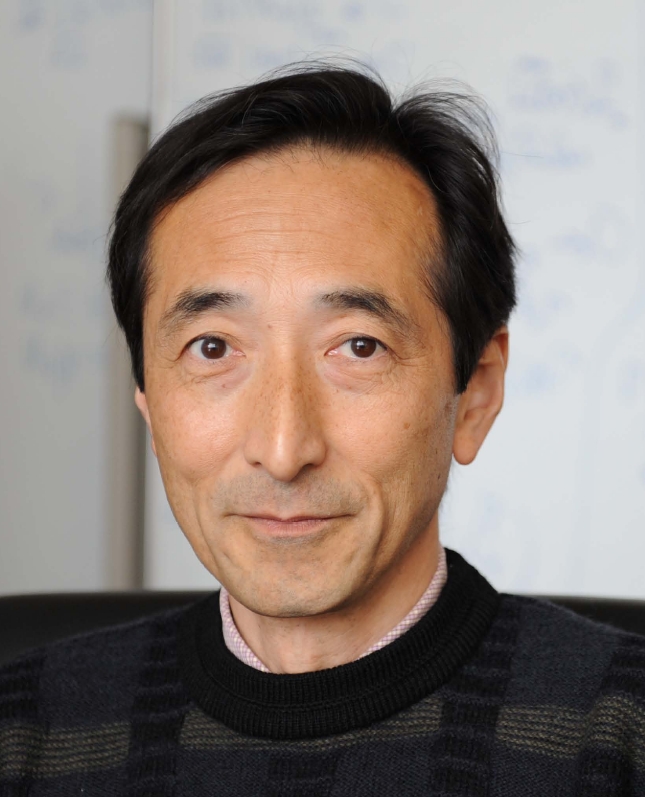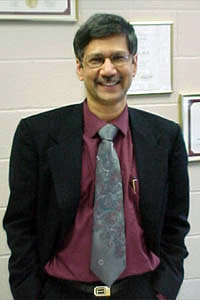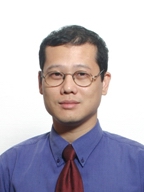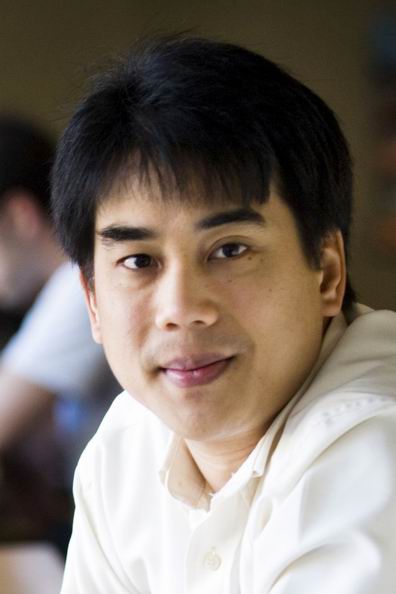Keynote Speakers
 Kazuo Aoki is Professor at the Department of Mechanical Engineering and Science of Kyoto University. His speciality is rared gas dynamics, with a focus set onto asymptotic and numerical studies of rarefied or microscale gas flows. He was acting as Jubilee Professor at Chalmers University of Technology (2002). Amongst others, he stayed as Visiting Professor at the Université Pierre et Marie Curie (Paris, France), the Université de Bordeaux 1 (Bordeaux, France), the Université Paul Sabatier (Toulouse, France), the Polytecnico di Milano (Milan, Italy) and the Università di Roma "La Sapienza" (Rome, Italy). He was also Visiting Fellow at different reserch institutes as the Weierstrass Institute of Applied Analysis and Stochastics (Berlin, Germany) and the Isaac Newton Institute for Mathematical Sciences (Cambridge, UK). He is member of different international committees, amongst them the Advisory Committee of the "International Symposia on Rarefied Gases" and others more. Currently, Prof. Aoki is also one of three Editors-in-Chief of "Kinetic and Related Models", a journal of the American Institute of Mathematical Science, and member as well of the editorial board of different other international journals.
Kazuo Aoki is Professor at the Department of Mechanical Engineering and Science of Kyoto University. His speciality is rared gas dynamics, with a focus set onto asymptotic and numerical studies of rarefied or microscale gas flows. He was acting as Jubilee Professor at Chalmers University of Technology (2002). Amongst others, he stayed as Visiting Professor at the Université Pierre et Marie Curie (Paris, France), the Université de Bordeaux 1 (Bordeaux, France), the Université Paul Sabatier (Toulouse, France), the Polytecnico di Milano (Milan, Italy) and the Università di Roma "La Sapienza" (Rome, Italy). He was also Visiting Fellow at different reserch institutes as the Weierstrass Institute of Applied Analysis and Stochastics (Berlin, Germany) and the Isaac Newton Institute for Mathematical Sciences (Cambridge, UK). He is member of different international committees, amongst them the Advisory Committee of the "International Symposia on Rarefied Gases" and others more. Currently, Prof. Aoki is also one of three Editors-in-Chief of "Kinetic and Related Models", a journal of the American Institute of Mathematical Science, and member as well of the editorial board of different other international journals.
Kazuo Aoki
In recent years, gas flows in small systems have become increasingly important, since the modern technology has succeeded in making the size of mechanical systems smaller and smaller. When the size of the system becomes comparable to the mean free path of gas molecules, ordinary gas dynamics fails to describe the behavior of the gas. In such cases, one has to employ kinetic theory of gases, the fundamental equation of which is the Boltzmann equation. Since this equation is a complicated integro-differential equation with many independent variables, neither analytical nor numerical treatment is an easy task. Therefore, various approaches of different flavor have been devised on the basis of the Boltzmann equation. Among them are direct numerical computation (stochastic and deterministic methods), model Boltzmann equations (BGK model, ES model, etc.), slip flow theory, and moment methods. In this lecture, I will introduce some different approaches taken in my research group in recent years. More specifically,
Andrew deMe llo is Professor of Biochemical Engineering at ETH Zurich. His research group is engaged in a broad range of activities in the general area of microfluidics and nanoscale science. Primary specialisations include the development of microfluidic devices for high-throughput analysis, ultra-sensitive optical detection techniques, nanofluidic reaction systems for chemical synthesis, novel methods for nanoparticle synthesis, the exploitation of semiconducting materials in diagnostic applications and the development of intelligent microfluidics. More recently, a key focus of research efforts has been the development of droplet-based microfluidic systems for the processing of biological systems and live organisms. A primary goal of this activity is to create ultra high-throughput systems able to perform millions of complex chemical and biological processes in short times and on miniscule sample volumes. He has published in excess of 180 papers in peer-reviewed journals and given over 250 invited talk in Europe, Asia and North America. Science originating from the deMello group has been recognized through a number of awards, including Corday Morgan Medal (Royal Society of Chemistry, 2009); Clifford Paterson Medal (The Royal Society, 2009); the Clark Memorial Lectureship (California State University, 2007); Fellowship of Royal Society of Chemistry (2004) and the SAC Silver Medal (Royal Society of Chemistry, 2002).
llo is Professor of Biochemical Engineering at ETH Zurich. His research group is engaged in a broad range of activities in the general area of microfluidics and nanoscale science. Primary specialisations include the development of microfluidic devices for high-throughput analysis, ultra-sensitive optical detection techniques, nanofluidic reaction systems for chemical synthesis, novel methods for nanoparticle synthesis, the exploitation of semiconducting materials in diagnostic applications and the development of intelligent microfluidics. More recently, a key focus of research efforts has been the development of droplet-based microfluidic systems for the processing of biological systems and live organisms. A primary goal of this activity is to create ultra high-throughput systems able to perform millions of complex chemical and biological processes in short times and on miniscule sample volumes. He has published in excess of 180 papers in peer-reviewed journals and given over 250 invited talk in Europe, Asia and North America. Science originating from the deMello group has been recognized through a number of awards, including Corday Morgan Medal (Royal Society of Chemistry, 2009); Clifford Paterson Medal (The Royal Society, 2009); the Clark Memorial Lectureship (California State University, 2007); Fellowship of Royal Society of Chemistry (2004) and the SAC Silver Medal (Royal Society of Chemistry, 2002).
DROPLET-BASED MICROFLUIDICS FOR High-Throughput EXPERIMENTATION
Andrew J. deMello
The past 15 years have seen considerable progress in the development of microfabricated systems for use in the chemical and biological sciences. Interest in microfluidic technology has in large part been driven by concomitant advances in the areas of genomics, proteomics, drug discovery, high-throughput screening and diagnostics, with a clearly defined need to perform rapid measurements on small sample volumes. At a basic level, microfluidic activities have been stimulated by the fact that physical processes can be more easily controlled when instrumental dimensions are reduced to the micron scale.
The relevance of such technology is significant and characterized by a range of features that accompany system miniaturization. Such features include the ability to process small volumes of fluid, enhanced analytical performance, reduced instrumental footprints, low unit costs, facile integration of functional components within monolithic substrates and the capacity to exploit atypical fluid behaviour to control chemical and biological entities in both time and space. Based on these advantageous characteristics, microfluidic systems have been used to good effect in a wide variety of applications including nucleic acid separations, protein analysis, process control, small-molecule synthesis, DNA amplification, immunoassays, DNA sequencing, cell manipulations, nanomaterial synthesis and medical diagnostics.
My lecture will describe recent studies that are focused on exploiting the spontaneous formation of droplets in microfluidic systems to perform a variety of analytical processes and the use of novel optical techniques for the interrogation of small volume environments.

Satish Kandlikar has been a professor in the mechanical engineering department at RIT for last twenty-one years. He received his Ph.D. degree from the Indian Institute of Technology in Bombay in 1975 and has been a faculty there before coming to RIT in 1980. His research is focused in the areas of flow boiling, critical heat flux, contact line heat transfer, and advanced cooling techniques. After investigating the flow boiling phenomena from an empirical standpoint, which resulted in widely accepted correlations for different geometries, he started to look at the problem from a fundamental perspective. Using the high-speed photography techniques, he demonstrated that small bubbles are released at a high frequency under flow conditions, requiring high-speed photography and microscope to observe the two-phase flow characteristics. He has also worked in the area of binary flow boiling, bubble nucleation, contact angles, and interline heat transfer phenomena. He has published about seventy conference and journal (about 30) papers, He has presented a number of invited and keynote lectures nationally and internationally.
Contact Line Dynamics of Liquid-Gas Interfaces over Confined/Structured Surfaces
Satish G. Kandlikar
Gleason Professor of Mechanical Engineering
Rochester Institute of Technology
The movement of liquid drops and vapor bubbles in small confined passages is of fundamental research interest, and is currently being explored in the field of fuel cell water management and boiling heat transfer. Droplets emerging from the irregular surfaces of a GDL (gas diffusion layer) in gas channels, 0.5 mm or smaller in hydraulic diameter, interact with the wall and GDL surfaces and determine the nature of two-phase flow occurring in the flow passages of a proton exchange membrane fuel cell. Similarly, boiling occurring in microchannels coated with nanowires presents an entirely new configuration for liquid-vapor-solid interfaces. The talk will cover some of these topics through the research being conducted in the author’s Thermal Analysis, Microfluidics and Fuel Cell Laboratory at Rochester Institute of Technology.

Holger Loewe received his PhD in 1984 at the Technische Hochschule Carl Schorlemmer in Merseburg, East-Germany. After working in industry for a couple of years, he became assistan professor at the Technical University Ilmenau, Department of Electrochemistry and Plating. 1998, he peformed an DAAD research stay at the Central Electrochemical Research Institute CECRI, Karaikudi, India. Since 1999 he is Director of Research and Development at IMM Institut für Mikrotechnik Mainz. Since 2005, he is also Professor for Chemical Micro Process Technology at the Johannes-Gutenberg-University Mainz, Germany. Aside of this, Holger Loewe becam a Visiting Professor at Dalian University of Technology (DLUT), Dalian, China, as well as Guest Professor at the East China University of Technology (ECUST) in Shanghai, China, and Guest Professor at the Zheijang University (ZJU) in Hangzhou, China.
Unusual Heat Management for Imidazole-based Synthesis of Ionic Liquids Using Micro-flow Conditions
H. Löwe1,2*, R. D. Axinte1, D. Breuch1, N. Ehm1
1 Johannes Gutenberg University Mainz, 55128 Mainz, Germany
2 Institut fuer Mikrotechnik Mainz GmbH, 55129 Mainz, Germany
The N-alkylation of 1-methyl-imidazole is a common procedure for the synthesis of ionic liquids. Quarternation of the N-atom from the imidazole core with alkylating substances, e.g. with diethyl sulfate (example 1) or methyl trifluoromethanesulfonate (example 2), suffers from instantaneous reaction combined with extremely fast and high exothermal behavior once the activation energy is reached. These reactions are commonly performed in batch with long processing times up to several hour or even days to avoid thermal overshooting. Thermostats are widely used as conventional heating and cooling system also by performing these reactions in micro reactors. In this case the provided power is mostly disproportional high and fixed, and consequently, fluctuations of released heat, e.g. by changing reactant flow rates, is not considered. In order to shorten reaction times and obtain concurrent safe and sustainable process conditions, a stainless steel chip-like single-channel micro reactor equipped with external heat pipes (60W) was used.
However, the cooling of micro structured reactors with heat pipes is not the sole conceivable application. For the investigated reaction (example 1), they can provide the necessary activation energy to start reaction by transportation of heat from an external source. Once this energy barrier is reached, the reaction subsequently self-accelerates with high and instantaneous heat release which cannot be easily controlled by conventional driven fluidic heat exchangers. The above described heat pipes setup is able to dissipate the released heat within milliseconds, and the reaction zone inside the reactor is directed by two important parameters such as the amount of launched heat and the volume flow velocity of the reactants. Dangerous non-controlled out-of-reactor reaction can be avoided by self-mediation of a proper adjusted heat pipe system.
Additionally, the methylation with trifluormethansulfonate (example 2) is even faster with a steep and high heat release which leads to a thermal induced burst-out when processed in batch. In comparison, this reaction was performed in the micro reactor above described setup with an equimolar reactant feed ratio. Online monitoring of the released reaction heat with IR imaging gave the clear indication that this reaction can be performed safely with overall flow rates of nearly 20 mL per minute without thermal overshooting. With this flow rate the residence time decreases down to one second and the production rate is increased up to 1.29 kg per hour a space time yield of 28 t h-1m-3 concurrently (calculated with outer reactor dimensions without heat pipe).

Nam-Trung Nguyen received his Dip-Ing, Dr Ing and Dr Ing Habil degrees from Chemnitz University of Technology, Germany, in 1993, 1997 and 2004, respectively. In 1998, he was a postdoctoral research engineer in the Berkeley Sensor and Actuator Center (University of California at Berkeley, USA). Currently, he is an Associate Professor with the School of Mechanical and Aerospace Engineering (MAE) of Nanyang Technological University (NTU) in Singapore. His research is focused on microfluidics, nanofluidics, micro/nanomachining technologies, micro/nanoscale sience, and instrumentation for biomedical applications. He published over 170 journal papers and filed 8 patents, of which 3 were granted. Among the books he has written, the first and second editions of the bestseller “Fundamentals and Applications of Microfluidics” co-authored with S. Wereley were published in 2002 and 2006, respectively. The second edition of the bestselling book "Micromixer" was recently published by Elsevier in 2011. Dr. Nguyen is a Fellow of ASME and a Member of IEEE.
Active manipulation schemes for microdroplets
Droplet-based microfluidics has been proven to have a huge impact on lab-on-a -chip applications. The well defined volume and the small size of microdroplets allow minute amount of reagents to be handled in a precise manner. Microdroplets offer further advantages such as low cross contamination, fast mixing and short residence time. This talk discusses a number of active manipulation techniques for microdroplets for both digital and continuous-flow microfluidics platforms. Basic actuation schemes such as electrowetting, thermocapillarity, magnetism and surface acoustic wave have been used for manipulating discrete droplets in digital microfluidics. The same schemes have also been utilised for controlling basic processes in continuous-flow microfluidics such as formation, coalescence and switching of microdroplets. The talk will be illustrated by examples coming from the speaker’s research programme and recently published works of other groups.
 Leslie Yeo is currently an Australian Research Fellow and Professor in the School of Electrical & Computer Engineering and Co-Director of the Micro/Nanophysics Research Laboratory at RMIT University, Australia. He received his PhD from Imperial College London in 2002, for which he was awarded the Dudley Newitt prize for a computational/theoretical thesis of outstanding merit. Prior to joining RMIT University, he was a Mathematical Modeller at Det Norske Veritas UK and a postdoctoral research associate in the Department of Chemical & Biomolecular Engineering at the University of Notre Dame, USA, after which he held a faculty position at Monash University. Dr Yeo was the recipient of the 2007 Young Tall Poppy Science Award from the Australian Institute for Policy & Science ‘in recognition of the achievements of outstanding young researchers in the sciences including physical, biomedical, applied sciences, engineering and technology’, and both the Dean and Vice-Chancellor’s awards for excellence in early career research. His work on microfluidics has been featured widely in the media, for example, on the Australian Broadcasting Corporation’s science television program Catalyst, 3RRR radio broadcast, and in various articles in The Economist, New Scientist and The Washington Times, in addition to being highlighted in Nature and Science. Dr Yeo is co-author of the book Electrokinetically Driven Microfluidics & Nanofluidics (Cambridge University Press), and the author of over 120 research publications and 19 patent applications. He is also the Editor of the American Institute of Physics journal Biomicrofluidics.
Leslie Yeo is currently an Australian Research Fellow and Professor in the School of Electrical & Computer Engineering and Co-Director of the Micro/Nanophysics Research Laboratory at RMIT University, Australia. He received his PhD from Imperial College London in 2002, for which he was awarded the Dudley Newitt prize for a computational/theoretical thesis of outstanding merit. Prior to joining RMIT University, he was a Mathematical Modeller at Det Norske Veritas UK and a postdoctoral research associate in the Department of Chemical & Biomolecular Engineering at the University of Notre Dame, USA, after which he held a faculty position at Monash University. Dr Yeo was the recipient of the 2007 Young Tall Poppy Science Award from the Australian Institute for Policy & Science ‘in recognition of the achievements of outstanding young researchers in the sciences including physical, biomedical, applied sciences, engineering and technology’, and both the Dean and Vice-Chancellor’s awards for excellence in early career research. His work on microfluidics has been featured widely in the media, for example, on the Australian Broadcasting Corporation’s science television program Catalyst, 3RRR radio broadcast, and in various articles in The Economist, New Scientist and The Washington Times, in addition to being highlighted in Nature and Science. Dr Yeo is co-author of the book Electrokinetically Driven Microfluidics & Nanofluidics (Cambridge University Press), and the author of over 120 research publications and 19 patent applications. He is also the Editor of the American Institute of Physics journal Biomicrofluidics.
The Lab-on-a-Disc: Miniature Counterpart to the Lab-on-a-CD for Driving Chip-Based Microcentrifugation
Leslie Yeo, James Friend, Nick Glass, Richard Shilton
Micro/Nanophysics Research Laboratory, RMIT University, Melbourne, VIC 3000, Australia
The Lab-on-a-CD concept has opened up the powerful possibility of carrying out a wide range of microfluidic operations simply by using a compact disk (CD) player to spin a disk on which microfluidic channels and components are fabricated . Nevertheless, the bulk rotation of the entire CD structure is relatively cumbersome, expensive and unreliable, quite the antithesis of microfluidic philosophy. Interconnectivity, i.e., fluid transfer on and off the chip, is also difficult with these devices. Moreover, the rotation of the entire structure is non-specific (i.e., all components on the CD are rotated), which places severe limitations on upstream or downstream components, e.g., the dispensing or detection components, for which rotation may produce undesirable effects. Here, we demonstrate a novel microcentrifugation technique in which symmetry breaking of a planar surface acoustic wave (SAW) propagating along a piezoelectric substrate can generate a rotational acoustic streaming flow in a sessile nanoliter drop (which is several orders of magnitude smaller than the CD) placed atop the substrate. The azimuthal flow is rapid, with linear velocities of several cm/s giving rise to Reynolds numbers between 10 and 100. Such fast azimuthal streaming flows, shown to be chaotic beyond a threshold power, can be used to generate intense micromixing within the drop. Indeed, we show that the rate and yield of a variety of distinct chemical and biochemical reaction classes far exceed that obtained using ultrasonic or microwave-assisted mixing, and with considerably lower power. As an example, in-gel protein sample processing and tryptic digestion can be carried out on-chip in under 30 mins. Further, samples can be atomised from a cheap paper-based microfluidic system, thus demonstrating the potential for direct interfacing with mass spectrometry following chemical synthesis. The microcentrifugation effect can also be exploited for particle manipulation and sorting. We demonstrate this for bioparticle concentration for rapid and sensitive pathogen detection or the separation of red blood cells from plasma for miniaturized diagnostic applications. It is also possible to separate two different particle species by size by exploiting the unique size-dependent scaling between the acoustic and drag forces acting on the particle. Finally, we show the ability of the device to drive the rotation of tiny thin disks made from SU-8 or Mylar down to 100 micron in diameter at speeds close to several thousand rpm.
